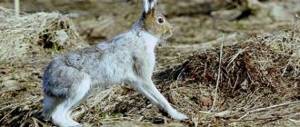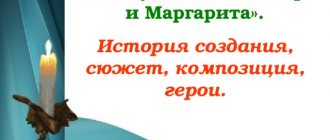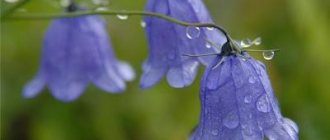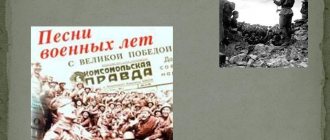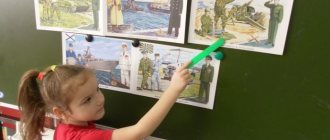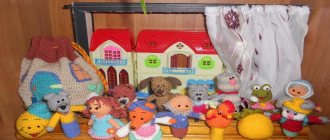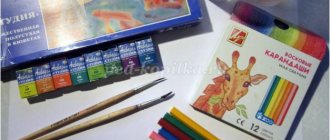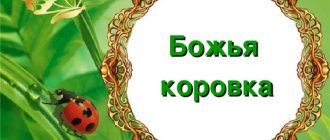Master class for school teachers. Topic: Research activities
Master class “Research activity as a means of increasing motivation and effectiveness of educational activities”
At the entrance, everyone chooses a ribbon, the desks are 5 groups of 5 people on each desk with color-coded badges.
On the desk are hats, materials for work, and pens. Good afternoon, dear colleagues. I am glad to welcome you today to this event. My name is Nadezhda Petrovna, I work as a history and social studies teacher at the Kuligino school in the Kez district. The topic of my master class is “Research activity as a means of increasing motivation and effectiveness of educational activities.” I would like to start my speech with a Chinese proverb.
“Tell me and I’ll forget, show me and I’ll remember, let me try and I’ll understand.”
Indeed, only by acting independently, through trial and error, does a child acquire—“appropriate”—knowledge and experience. What kind of people does our society need? That's right - smart, hardworking, creative. The problem of child development is one of the most complex and interesting problems of our time in domestic and foreign pedagogy, because it is connected with the prospects for the development and prosperity of modern society. I think many of you will agree with me that schoolchildren need to be actively involved in project and research activities, because it contributes to the formation of key competencies in students, and also shows at an accessible level where subject knowledge can be applied in practice! — Dear colleagues, raise your hand, those who use project and research activities in their work! - Thank you! - What about in class? — I’m pleased that there are like-minded people in the hall!!!!! The goal of such activities is the formation of key competencies necessary for every member of modern society, the education of an active, responsible citizen and creative creator. The research and design method: - allows students to develop interest in the subject, - a tendency to perform complex tasks, - the ability to think creatively, - and also instill in them self-confidence, - develops the ability to independently determine the goals of their learning; — set and formulate tasks in learning and cognitive activity; - independently plan ways to achieve goals. The new standard pays special attention to project and research activities at all levels of education, since both project and research have a powerful resource in the formation of universal educational activities (personal, regulatory, cognitive, communicative). And even in textbooks you can see approximate topics for project or research work; when drawing up a work program for a subject, you can indicate the defense of this type of work as a control. In my practice, I try to introduce this type of activity not only in the classroom, here, for example, are some short-term studies of students You all know very well that any activity includes a certain algorithm of actions, and research consists of several stages. I suggest you distribute the stages of research work in order. Stages of research: 1. Determining the topic of the project 2. Justification of the relevance of the topic 3. Formulation of the problem 4. Setting a goal 5. Setting specific research objectives 6. Proposing a hypothesis 7. Determining the object and subject of research 8. Selecting research methods. 9. Practical significance of the study 10. Formulation of the content 11. Formulation of the research conclusions 12. Defense It is clear that this work is not easy Let us, using an example, understand these stages Task 1. You have before your eyes a text of one piece of wisdom. Please read the text. One day a sage was wandering in search of meaning and came to a river. Neither the bridge nor the boat were visible. A problem has arisen - we need to cross, but how... The sage thought... What to do? How to connect two banks of a river? The sage closed his eyes and imagined how he would cross to the other side. “Eureka!” said the sage, “I need to make a boat that will lead me to my dream and solve the problem.” The sage sat down, drew a diagram of the boat, made calculations, drew up a plan... Just then his students arrived in time, and together they began to act, periodically looking into the plan, assessing the correctness and correcting mistakes. The team moved quickly, and very soon the boat was ready! The travelers examined it from all sides to see if there were any cracks, then they lowered it into the water - it was floating! You can cross! HOORAY! Less than 15 minutes had passed before the sage and disciples were on the other side of the river! The problem was solved and we could continue to travel. Based on the fairy tale story, we will try to highlight the main stages of the research. And for this you need to answer the questions that are written after the text. Task 1. 1) research topic? 2) relevance: why might this story be interesting to people? (there is no crossing over the river, but you need to cross it, how can you make this possible) 3) Problem Why couldn’t the sage cross the river? (there was no boat) 4) What was the sage’s goal (to cross the river) 5) Hypothesis (the sage to cross the river) 6) Object (what is being considered?) river 7) Subject (what is being studied?) crossing the river Methods (measurement , modeling) 9) Practical significance (the boat was built and will help people cross the river) 10) What is the result of this story? (students and teacher crossed to the other side) So, we have identified the main stages of the project (highlight on the board). Of course, this algorithm is not ideal. It is possible to make changes, additions, adjustments to it, but we tried to highlight the main, fundamental, significant things in working on any project. 2. Determining the topic of the project The first difficulty the teacher faces is choosing a topic. It should interest the child. Most children do not have permanent preferences, their interests are situational, and therefore it is necessary to find something that can captivate them. The work that you are planning to carry out must be doable, that is, it must correspond to the age characteristics of the children, its solution must be useful to the participants of the study, and must also be original, with elements of surprise and unusualness. I suggest that you, colleagues, go through all the stages of creating a mini-project using a specific example together I. The topic of the project, you now decide for yourself. So, Attention! Black box! Black box (with a banknote inside). II. What's in the black box? guess the riddle: It is not love, but the soul that warms. Not your health, but without them you feel unwell. Not a magnet, but an attraction. Not master, but subordinate. Not a servant, but they serve. (Money) What do you get on payday? What do pirates hide in chests? What are the candies sold for? What word will come out here? (Money) What is the theme of our project? Project topic: Money. This is the name of our general topic, but each group will have a mini study related to some specific aspect of the money issue. So, our groups have already been formed. I. Our next step is the distribution of roles in the group , we will do this very simply, on your tables there are some kind of hats, choose the one you like best. Everyone has chosen, now please peel off the sticker and read what role you play in the group. We put on the headdress and begin work. 1. Organizer - asks all participants about their opinion (version) 2. Speaker - speaks to the class with a ready-made group decision; 3. Secretary - writes down the opinions expressed (versions) and the decision 4. “Why” - asks clarifying questions or expresses an opposing opinion (version) 5. Search engine (looks for the necessary information in the text) Each group has its own task. You have cards on your tables - tips for writing a report. Your task is that you have to conduct a mini-research on the material you have and draw up a mini-research on these stages, you are given 15 minutes for this, and then defend your research work in front of our audience for up to 4 minutes. On your desks there is an instructional map and material on your topic for conducting research and writing a report. 1. Family budget 2. cryptocurrency - the money of the future 3. history of the appearance of money 4. Electronic money 5. what banknotes can tell about II. Group work. (Groups are given tasks and instruction cards.) Group work (15 minutes) Defense 4 minutes. Dear colleagues, the time allotted for your research has come to an end and we ask you to make a defense. We invite group 1 - Thank you very much! We invite group 2 - 3. Reflection As part of the master class, we worked through the main stages of project implementation during the training session. If you have questions, I will try to answer them. And now I will ask you to evaluate the significance of this master class directly for you. There are rose petals on my table, I suggest you take the petal that matches your attitude towards the master class and place it in a glass. So, the inclusion of a child in research activities is facilitated by active teaching methods (techniques) used in special classes or lessons. A child’s research tactics are not just one of the teaching methods. This is the way to form a special style of children's life and educational activities. It allows you to transform learning into self-learning and really launches the mechanism of self-development. The main difference between children who are able to take part in research work is that they have a need to learn new things. I wish you success in our difficult work and remind you that children get tired most of all when they are inactive. Thank you for your work!
2) relevance: why might this story be interesting to people? (there is no crossing over the river, but you need to cross it, how can you make this possible) 3) Problem Why couldn’t the sage cross the river? (there was no boat) 4) What was the sage’s goal (to cross the river) 5) Hypothesis (the sage to cross the river) 6) Object (what is being considered?) river 7) Subject (what is being studied?) crossing the river Methods (measurement , modeling) 9) Practical significance (the boat was built and will help people cross the river) 10) What is the result of this story? (students and teacher crossed to the other side) So, we have identified the main stages of the project (highlight on the board). Of course, this algorithm is not ideal. It is possible to make changes, additions, adjustments to it, but we tried to highlight the main, fundamental, significant things in working on any project. 2. Determining the topic of the project The first difficulty the teacher faces is choosing a topic. It should interest the child. Most children do not have permanent preferences, their interests are situational, and therefore it is necessary to find something that can captivate them. The work that you are planning to carry out must be doable, that is, it must correspond to the age characteristics of the children, its solution must be useful to the participants of the study, and must also be original, with elements of surprise and unusualness. I suggest that you, colleagues, go through all the stages of creating a mini-project using a specific example together I. The topic of the project, you now decide for yourself. So, Attention! Black box! Black box (with a banknote inside). II. What's in the black box? guess the riddle: It is not love, but the soul that warms. Not your health, but without them you feel unwell. Not a magnet, but an attraction. Not master, but subordinate. Not a servant, but they serve. (Money) What do you get on payday? What do pirates hide in chests? What are the candies sold for? What word will come out here? (Money) What is the theme of our project? Project topic: Money. This is the name of our general topic, but each group will have a mini study related to some specific aspect of the money issue. So, our groups have already been formed. I. Our next step is the distribution of roles in the group , we will do this very simply, on your tables there are some kind of hats, choose the one you like best. Everyone has chosen, now please peel off the sticker and read what role you play in the group. We put on the headdress and begin work. 1. Organizer - asks all participants about their opinion (version) 2. Speaker - speaks to the class with a ready-made group decision; 3. Secretary - writes down the opinions expressed (versions) and the decision 4. “Why” - asks clarifying questions or expresses an opposing opinion (version) 5. Search engine (looks for the necessary information in the text) Each group has its own task. You have cards on your tables - tips for writing a report. Your task is that you have to conduct a mini-research on the material you have and draw up a mini-research on these stages, you are given 15 minutes for this, and then defend your research work in front of our audience for up to 4 minutes. On your desks there is an instructional map and material on your topic for conducting research and writing a report. 1. Family budget 2. cryptocurrency - the money of the future 3. history of the appearance of money 4. Electronic money 5. what banknotes can tell about II. Group work. (Groups are given tasks and instruction cards.) Group work (15 minutes) Defense 4 minutes. Dear colleagues, the time allotted for your research has come to an end and we ask you to make a defense. We invite group 1 - Thank you very much! We invite group 2 - 3. Reflection As part of the master class, we worked through the main stages of project implementation during the training session. If you have questions, I will try to answer them. And now I will ask you to evaluate the significance of this master class directly for you. There are rose petals on my table, I suggest you take the petal that matches your attitude towards the master class and place it in a glass. So, the inclusion of a child in research activities is facilitated by active teaching methods (techniques) used in special classes or lessons. A child’s research tactics are not just one of the teaching methods. This is the way to form a special style of children's life and educational activities. It allows you to transform learning into self-learning and really launches the mechanism of self-development. The main difference between children who are able to take part in research work is that they have a need to learn new things. I wish you success in our difficult work and remind you that children get tired most of all when they are inactive. Thank you for your work!
Related posts:
Portfolio of a primary school teacher Synopsis of GCD in the middle group. Introducing children to Khakass ornaments Designing an educational subject-spatial development environment for preparatory children Design and research activities in elementary school
Similar articles:
Project-based extracurricular activities in elementary school
Stages of working on a project in elementary school, grades 3-4
Projects in elementary school in mathematics, grades 3-4
Projects in elementary school, grades 3-4. The world
Methodology for working on a project for gifted students in 4th grade
Master class “Project and research activities of junior schoolchildren in accordance with the Federal State Educational Standard”
Piskureva Olga Mikhailovna
Municipal educational institution
"Gymnasium No. 7"
G.o. Podolsk
Primary school teacher
Master Class
Topic: “ DESIGN AND RESEARCH ACTIVITIES OF JUNIOR SCHOOLCHILDREN IN ACCORDANCE
with the Federal State Educational Standard”
Slide 1. Master class
Goal: Presentation of the experience of design and research activities of primary school students within the framework of the implementation of the Federal State Educational Standard, as one of the student-oriented technologies that contribute to the formation of key competencies.
Tasks:
1. Presentation of different forms of implementation of the design and research method within the framework of class and extracurricular activities and present an algorithm for working on the project.
2. Modeling by participants of the master class of extracurricular and classroom research projects for primary school students, ready for practical use.
Good afternoon, colleagues.
I am glad to welcome you to the master class “Design and Research Activities” Slide 2. Today I would like to present my experience in design and research technology. With the participants of the master class, we will try, using an algorithm, to build a model of two projects of extracurricular and in-class design and research activities. Slide 3.
“A significant influence on behavior and activity is exerted by the knowledge that is independently acquired by a person and is associated with a discovery made by him”
Carl Rogers
1.Technology Introduction
My choice of design and research technology is not accidental.
In modern living conditions, it is not enough just to have a set of knowledge, skills and abilities; you must be able to apply them in real life, in a real situation. The most appropriate form of using students' creative potential is considered to be the project method. Slide 4 Design and research activities form an integral system of universal knowledge, skills and abilities, i.e. key competencies that determine the modern quality of education. Slide 5 (commenting)
Modern life requires new work with educational content. The amount of information in the world doubles every 10 years, and this requires the ability to select the most important things in the world of information.
Slide 6.
That is why I pay great attention to the formation of information competence.
To complete each project conceived by the child, group, or class, various pedagogical technologies and methods are used.
Slide 7.
2.Presentation of teaching experience by a master teacher:
I have been working with this technology for 15 years and it has given the following results:
Slide 8.
.This is a successful participation in the research conference for primary schools “Otkritie”. During this time, primary school graduates and 4th grade students were winners of this conference. Works were presented on the topic: “Wind Energy”, “Is It Possible to See Sound”, “Compliance with Dog Walking Rules”;
